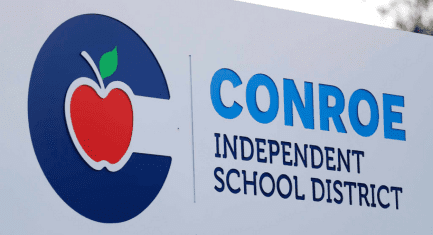Seven school districts have joined in this first official volley in the latest battle over school finance in Texas. The very most basic argument made by the plaintiffs in the suit is that the school finance system in Texas is unconstitutional. I have some observations and also some notes for those of you who are brave enough to start reading the suit (caveat emptor: I am not an expert on school finance in Texas, just an interested observer, and this is by no means a crash course in school finance, just a quick bullet-point list to help you understand what’s going on):
- Quick history lesson: the Texas Constitution was written in 1877, and that’s where the term “efficient” in relation to our school system was coined. The state got involved in school funding in 1949, with the Glimer-Aikin Act. “Robin Hood” came into existence in 1993 with Senate Bill 7 (which was preceded with a court case, Edgewood v Kirby, a legislative effort overturned by the courts, and a lot of wrangling). In 2001, the West Orange-Cove CISD v. Neeley lawsuit was filed, and in 2004 the Travis County District Court gave the legislature an October 2005 deadline to address the unconstitutional aspects of the system. There’s more to it, but that’s the History 101.
- Tax rates for local school districts are capped by the state.
- This all boils down to districts with higher tax rates suing the state because there are districts with lower rates; the idea would be to force property-rich districts to raise their tax rates and for the excess revenue to be recaptured for property-poor districts.
- Local funding, which is the majority of the funds used for your ISD, comes from this equation: property appraisal x tax rate = revenue. There a lot of things that complicate this, but the real sticky variable is the property appraisal. Appraisals are arbitrary, conducted differently across central appraisal districts with no attempt at standardization, and rise at variable rates even within the same CAD (though capped, yearly, at a 10% hike). The result, of course, is that property-rich districts have more of their own revenue, and property-poor districts do not.
- “Robin Hood,” the term used to describe the revenue recapture that takes place in some districts, boils down to this: if a district’s tax rate includes a penny that generates more revenue than the $4760 per WADA (see below), every dime over that $4760 is then subject to recapture by the state (and it is then redistributed). 91% of Texas school districts aren’t subject to recapture; the other 9% varies depending on property values in a given year. Highland Park ISD is an interesting case in point – they are always subject to recapture (hey, have you driven through Highland Park??).
- WADA = “weighted average daily attendance.” School districts receive state money based on average daily attendance. Some students are weighted more heavily when they attend school, hence the term “WADA.” How does that work, exactly? Special needs, ESL, and free lunch students all count differently than the typical child in attendance (as in, they count for more), so when the attendance is added up and averaged out, some districts are entitled to more state funds than others.
- At no point in the lawsuit is property value taken into account; tax rates differ depending on where you live, that’s true, but if Taxpayer A is charged $1.17 per $100 of valuation, and Taxpayer B is charged $1.06 per $100 of valuation, and Taxpayer A lives in, say, China Springs ISD and Taxpayer B lives in Lake Travis ISD, Taxpayer B is paying more in taxes (and probably substantially more over time, since appraisals can go up at the rate of 10% per year, and appraisals rise faster in property-rich districts). The reality is that property-rich districts have more revenue regardless of tax rates, period.
In laying out what the state’s intention would be toward public education, Texas’ constitutional framers said this in Article 7, Section 1 of the document (emphasis mine): “A general diffusion of knowledge being essential to the preservation of the liberties and rights of the people, it shall be the duty of the Legislature of the State to establish and make suitable provision for the support and maintenance of an efficient system of public free schools.” Therein lies the big question. What is “efficient” and how is it achieved (and how do you define efficient in today’s terms while being faithful to the framers’ intent)? The debate is over financing of schools, and how to achieve equity in funding – though whether “equitable” and “efficient” have the same meaning is where the tangle often arises.
It would be difficult to assert that this latest lawsuit was in any way avoidable. There are some who believe that the political will to find and legislate a permanent solution that meets the constitutional standard just doesn’t exist, and I think that’s extremely fair to say. Without a permanent solution, there is a legitimate reason for school finance to be revisited in every legislative session and making it an automatic campaign issue, or on the other side, to force the courts into it and thereby punting any political responsibility. The trouble with school finance equity in Texas lies with the tax rate, which is capped but can still “float” – the disparity created by arbitrary revenues is really the issue, because plenty of districts are able to adequately educate their students in spite of problems like WADA and recapture. If we’re trying to address the issue of how to equitably (and efficiently) fund our schools, we need to address the issue of revenue, and with it appraisals. Raising everyone’s tax rate so that each district receives amount of money as Highland Park ISD is not a solution – it totally ignores the fact that one district may have 2/3 of what another has, and educates its students better and more efficiently.
One other note. In researching the background for this post, almost every resource I came across was leftist or educrat in origin. Where is the right on this issue? I really want to know, and I believe it is long past time we start demanding that our conservative elected officials become intimately familiar with this issue and begin offering real solutions. Many of them are about to find out how much of a campaign issue school finance really can be – many of them already have, to the detriment of the legislature and fiscal conservatism in Texas. We have the tools. We have already been arguing for reform on some of the very issues that are related to this (appraisals, revenue caps, tax rate rollbacks, etc). It is time to get serious.



